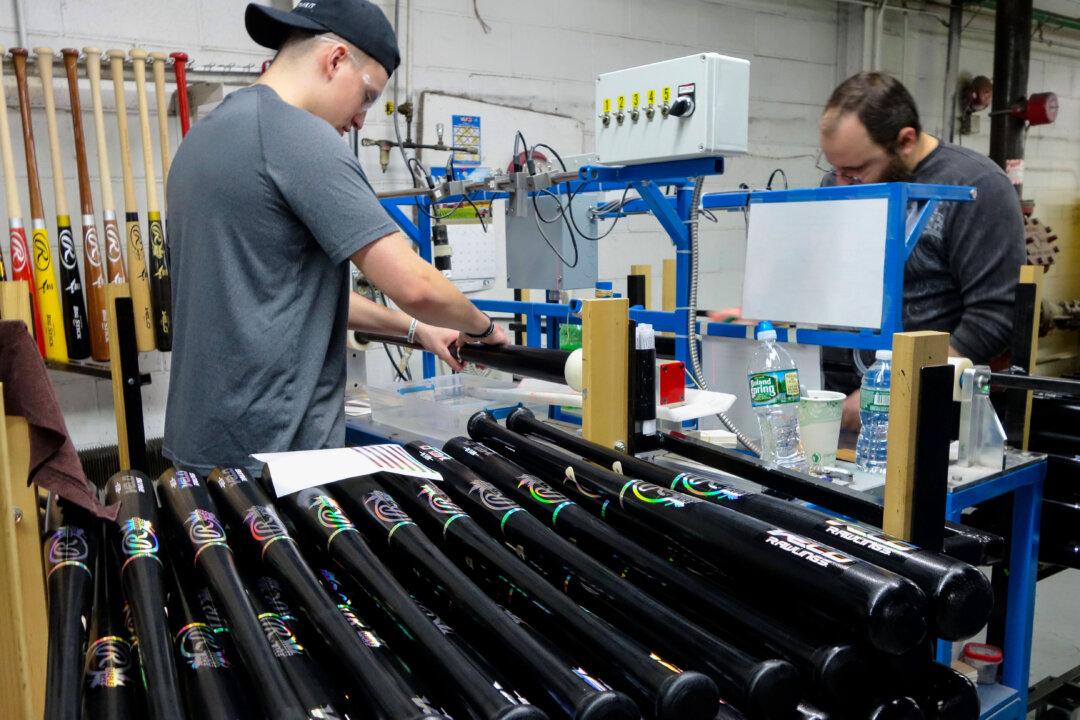Online inventory of gold bars is being snapped up by customers rapidly, said Costco on Tuesday.
The gold bars are being sold for around $1,949 and $1,979 respectively, according to Business Insider, and are air shipped via UPS insured service. Both bars are “member-only” items. A Costco standard membership costs $60 per year, with the executive membership costing $120.
About three months ago, some people on Reddit had complained that they missed out on buying the gold bars when Costco listed them for sale.
In an interview with CNBC, Jonathan Rose, co-founder of Genesis Gold Group, said that the sale of gold bars is a good promotion strategy for Costco appealing to certain demographics among its shoppers.
“They’ve done their market research. I think it’s a very clever way to get their name in the news and have some great publicity,” he said.
“There is definitely a crossover of people living off the land, being self-sufficient, believing in your own currency. That’s the appeal to gold as a safe haven as people lose faith in the U.S. dollar.”
He pointed out that the safe-haven aspect of investing in gold remains strong given the economic challenges the United States is facing, including regulatory pressure on banks, inflation, and concerns about the commercial real estate market.
“We know what the road map looks like: Bank failures, commercial loans defaulting at an alarming rate … they don’t seem to have a handle on inflation, and that’s why they keep raising interest rates,” he said.
A Golden Hedge
Gold is traditionally seen as a safe-haven asset by investors, primarily to protect wealth during economic uncertainties. The precious metal is considered a dependable hedge, mainly because gold has retained its value when alternatives like currencies decline.

“Many people view gold primarily as an asset that they hope will rise in price. In doing so, however, they commit a momentous error in thinking. In reality, gold’s value does not fluctuate. What does change is the purchasing power of fiat currencies measured in gold,” it states.
“These move to varying degrees, but always as a group relative to gold, the immovable anchor. Thus, the price of gold does not rise, but fiat currencies depreciate over the long term relative to gold, some more, some less.”
By May, the purchasing power of currencies like the British pound, Japanese yen, and Swiss Franc had reached new all-time lows against gold since the outbreak of the Ukraine war.
In six out of the eight biggest stock market declines between 1976 and 2011, gold registered positive returns, the analysis states. During the Black Monday event in 1987, the recession in 2001, and the sovereign debt crises in 2010 and 2012, gold gave positive returns.
However, some have questioned the notion of gold being viewed as some sort of perfect hedge against economic uncertainties. In an interview with CNBC back in 2021, Amy Arnott, a portfolio strategist at Morningstar, said that gold “is really not a perfect hedge.”
“There’s no guarantee if there’s a spike in inflation, gold will also generate above-average returns,” she said after analyzing the returns of various asset classes during periods of high inflation.
Ms. Arnott’s analysis showed that when annual inflation was around 6.5 percent between 1980 and 1984, gold prices lost 10 percent on average, and from 1988 to 1991 when inflation was running at about 4.6 percent, gold registered negative returns of 7.6 percent.
Inflation, Economic Conditions
At present, inflation continues to remain elevated, coming in at 3.7 percent in August. Though it is down from the 9.1 percent peak in June last year, current inflation is still more than double the 1.4 percent registered in January 2021 when President Joe Biden assumed office.
Meanwhile, experts are predicting a tough time ahead for the American economy.
“A near-stalling of business activity in August raises doubts over the strength of U.S. economic growth in the third quarter,” said Chris Williamson, chief business economist at S&P Global Market Intelligence.







